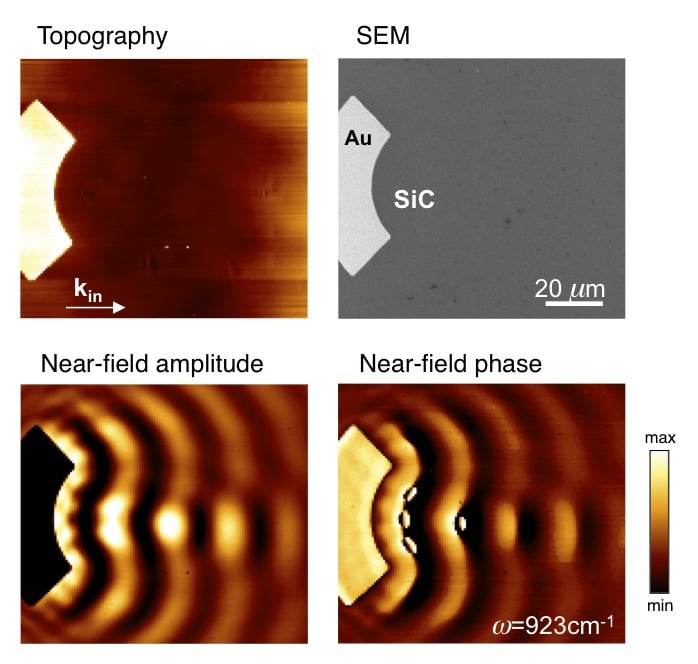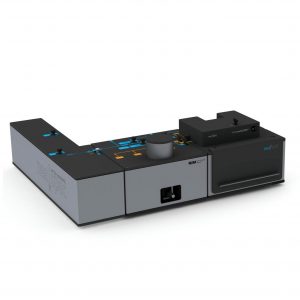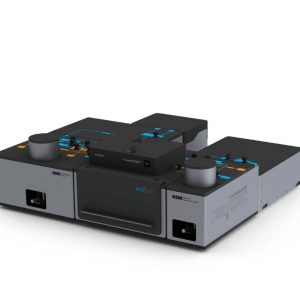- Application description
- neaSCOPE product line
Near-field infrared microscopy makes it possible to study the propagation of surface waves. Near-field images with amplitude and phase resolution reveal local interference effects and allow the determination of a complex wave vector of surface waves. Surface waves can be excited in the mid-infrared region (e.g. metal structures on silicon carbide (SiC) crystals, promoting surface phonon polaritons (SPhP)).

The topographic image shows the circular structure used to excite SPhPs. SPhPs propagate perpendicular to the edge of the metal film and the curved structure leads to the focusing effect of the waves. The near-field amplitude image clearly reveals a locally amplified signal about 40 µm away from this structure. It can be noticed that the metal structure is illuminated by a plane wave (used to excite SPhPs), which interfere with the surface wave field. Near-field infrared microscopy can thus be used effectively for amplitude and phase-resolved studies (e.g. “spoof plasmons”).

